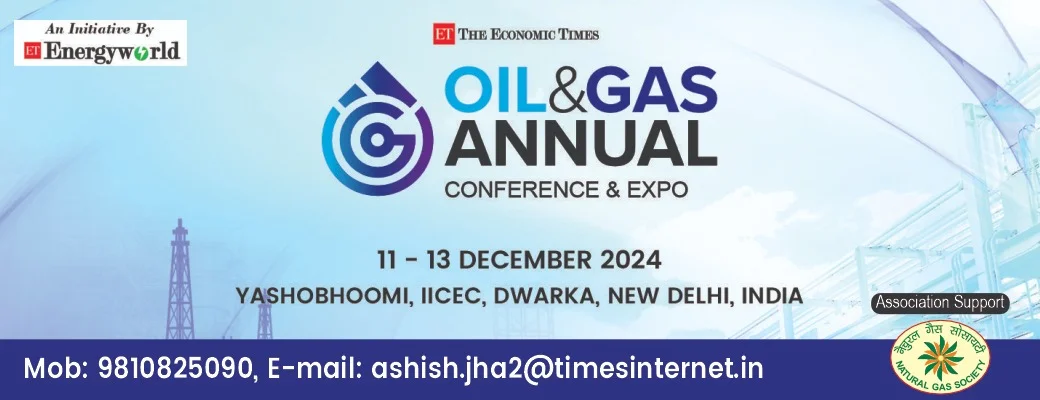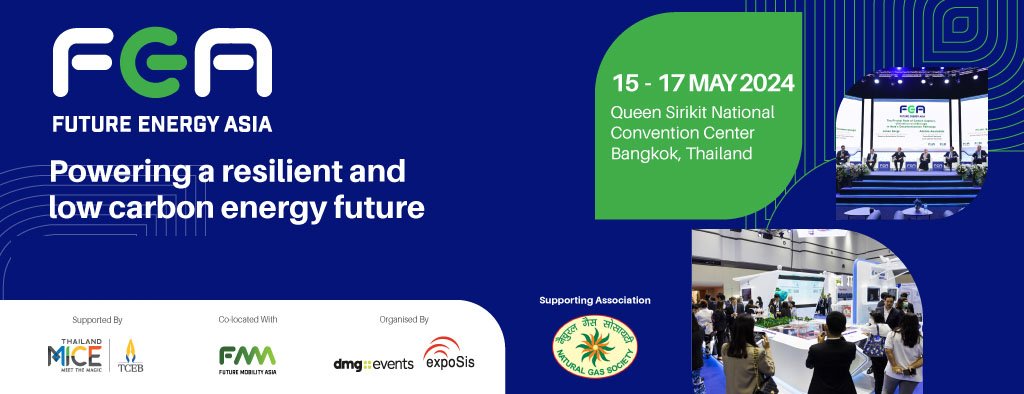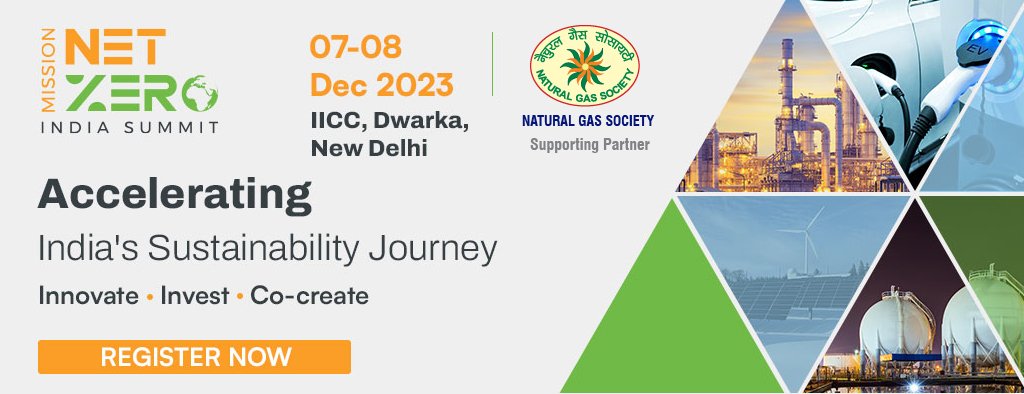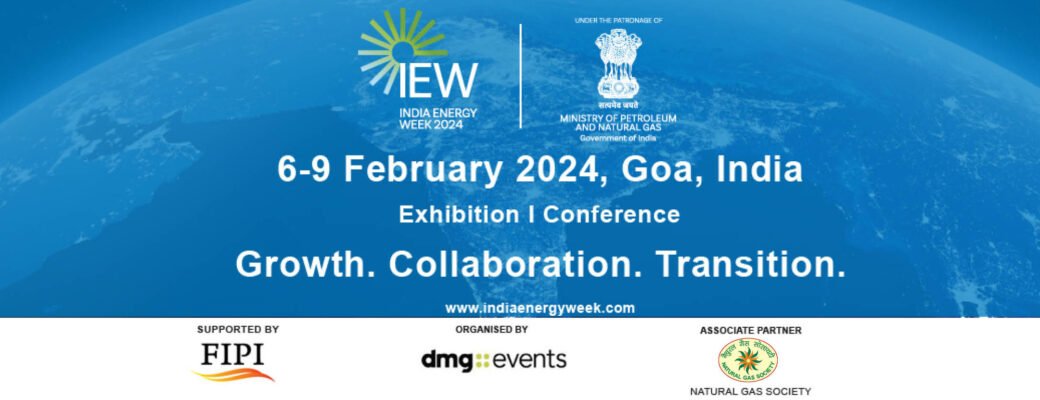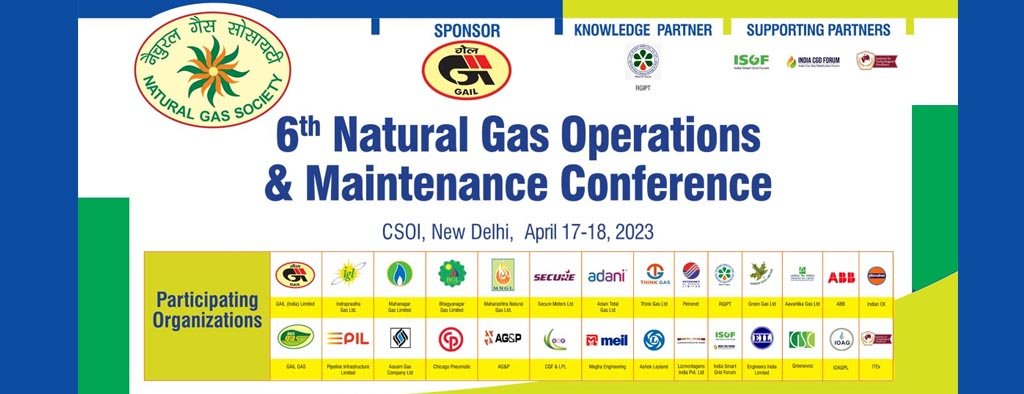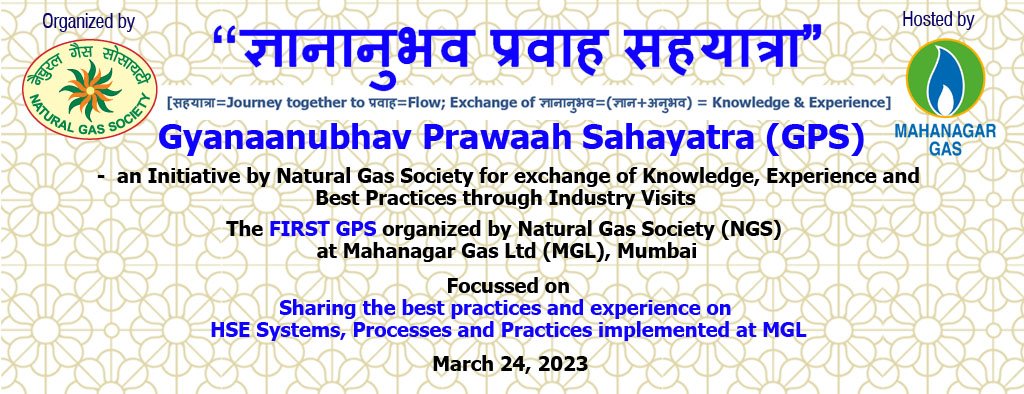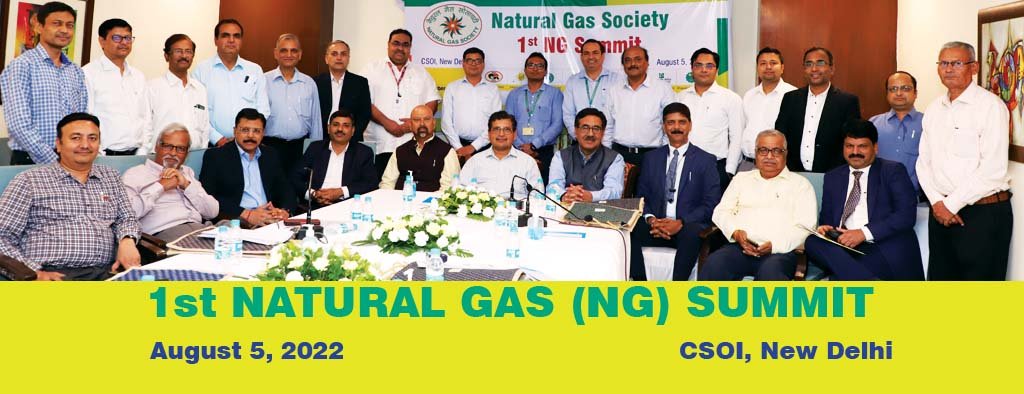
NGS’ NG/LNG SNAPSHOT – SEPTEMBER 2019, VOLUME II
National News Internatonal News
NATIONAL NEWS
City Gas Distribution & Auto LPG
Maruti to roll out CNG models of all small cars
 Maruti Suzuki, the country’s largest carmaker, will make all the small cars in its portfolio available in compressed natural gas (CNG) variants to reduce dependence on imported oil and cut down on vehicular pollution.
Maruti Suzuki, the country’s largest carmaker, will make all the small cars in its portfolio available in compressed natural gas (CNG) variants to reduce dependence on imported oil and cut down on vehicular pollution.
read more
The company expects the increase in sales of CNG and hybrid vehicles to pick up the slack after its planned stoppage of diesel vehicle manufacture. “All small cars in our portfolio will get converted to CNG,” Maruti Suzuki chairman RC Bhargava told ET. “There is an acceptance from the government that CNG is a cleaner fuel, and it is being accepted for transportation. They are setting up 10,000 CNG distribution outlets.” The country’s No. 1 carmaker has borne the brunt of the drop in auto sales that’s part of the broader slump in the Indian economy. Maruti Suzuki posted a 35.9% decline in domestic sales to 94,728 units in August. Currently, the CNG option is available for eight Maruti Suzuki models, including Alto, Alto K10, WagonR, Celerio, DZire Tour S, Eeco, and Super Carry mini truck. The company has 16 models in its portfolio. ‘Encourage India-made CNG Kits’ CNG-powered vehicles currently constitute around 7% of overall sales of the company. In states where CNG distribution outlets are available, variants running on the fuel account for about 30% of the sales of each model, company executives said. Maruti Suzuki sold 31,000 CNG vehicles in the first four months of the current fiscal year. CNG distribution outlets currently are mostly located in Delhi, Mumbai and Gujarat. The company increased production of CNG-powered vehicles by 40% last fiscal and is in the process of raising it by another 50% this year. Bhargava said factory-made CNG vehicles cost substantially more than those retrofitted with kits because of taxes and manufacturing costs but pointed out that they are also safer. “Retrofitment is done with imported parts this is not Make in India,” he said. “To promote Make in India, the government must encourage factory-fitted CNG vehicles. We should make CNG kits in India. Safety levels of CNG cars should go up.” In a bid to push adoption of CNG vehicles in the personal mobility space, the petroleum ministry had last year announced plans to set up 10,000 CNG distribution outlets in 10 years. It is estimated that the country will save nearly?2 lakh crore in oil imports if personal car users switched to CNG vehicles. Maruti Suzuki said earlier this year that it will discontinue production of diesel vehicles due to the steep increase in costs related to the transition to BS VI emission standards from April 1, 2020.
show less
CNG price hike of 50p/kg to have no impact on autorickshaw drivers
The price of Compressed Natural Gas (CNG) has been hiked by 50 paise per kilogram in Gurugram, Rewari, Karnal, Delhi, Noida, Greater Noida and Ghaziabad. Indraprastha Gas Limited (IGL),
read more
which supplies CNG in the Delhi-NCR region, said that the new rate will be effective from Sunday 6am onwards. The hike was necessary to offset the impact on its input costs as a result of the recent appreciation of the US dollar vis-à-vis the Indian rupee, said an IGL official familiar with the matter. The price of CNG being supplied by IGL in Gurugram and Rewari would be ₹58.95 per kg, while in Karnal it would be ₹55.95 per kg. The consumer price would be ₹47.10 per kg in Delhi and ₹53.50 per kg in Noida, Greater Noida and Ghaziabad. Explaining the reasons behind the revision of CNG prices, an official spokesperson of IGL said that this marginal revision was necessitated due to the recent appreciation of the US dollar vis-à-vis the Indian rupee and the increase in operational costs since the last price revision. The base price of natural gas being procured by the IGL from all sources is dollar-linked, thereby making the entire input price dependent on the value of the dollar. However, this increase is expected to have a marginal impact on the running costs of vehicles per km. For auto-rickshaws, for instance, the increase would translate to just over one paisa per km, while for taxis, it would translate into two paise per km, IGL official said. With the price revision, CNG would still offer over 52% savings towards the running costs when compared to petrol-driven vehicles at the current level of prices. On the other hand, when compared to diesel-driven vehicles, the economics in favour of CNG at the revised price would be over 27%. A large number of auto-rickshaws and cabs in Gurugram have switched to CNG in the last two years.
show less
Central India’s first CNG mother station opened in Nagpur city
Union minister Nitin Gadkari inaugurated the first LCNG station of Central India in the city on Friday (Sept. 13). The initiative is a part of efforts to promote green vehicles with an aim to check pollution.
read more
The station set up by Rawmatt has come up in Kalamna off the Inner Ring Road. Mayor Nanda Jichkar and Nagpur Municipal Corporation (NMC) transport committee chairman Bunty Kukde were among those present on the occasion. Talking to the media, Gadkari said the use of CNG as an alternative to conventional fuel will play an important role in controlling rising pollution levels in a developing city like Nagpur. With the setting up of the CNG station, the NMC from next week is all set to operate seven of its standard city buses (Aapli Bus) converted to CNG from diesel. The work for conversion of remaining diesel operated standard buses to CNG is under way. Apart from NMC, a city-based engineering college, too, has converted its diesel run buses to CNG. Gadkari further said that CNG has many advantages over conventional petroleum products as it is a smart and affordable choice for vehicles. “People will save money on fuel, reduce emission levels and extend life of their vehicles,” he said. CNG amounts to 50% savings over conventional products such as diesel fuel, the minister said and explained how both CNG and LNG are cheaper than diesel. “A litre of diesel costs Rs69 per 3km, while a kilo of CNG and LNG cost Rs58 and 46 per 4km,” he said. According to Gadkari, NMC’s move to convert diesel buses into CNG will bring down its expenses by over Rs60 crore per annum. “Apart from Rawmatt, a distillery unit in the region is manufacturing 18 tonne CNG. Many more CNG units will come up in the region,” he said. The NMC will also produce 40-50 tonne bio-CNG from five biodigesters installed at the Bhandewadi sewage treatment plant. The CNG mother station will supply CNG to all stations that will be set up shortly at different localities on Wardha road, Umred road, Wadi etc. Gadkari said that five plants of CNG were also coming in the region, and claimed that around 125 projects for setting up bioCNG plants are also coming up. These projects will increase farmers’ profit, he said.
show less
Piped gas in Narsampet, Telengana soon
Households in Narsampet town will get Piped Natural Gas (PNG) in a few months, said local MLA Peddi Sudharshan Reddy. Speaking to the media at his camp office in Narsampet on Sunday,
read more
he said that Narsampet would become the first town in Telangana to get the PNG and also CNG (Compressed Natural Gas).“As of now, Bhagyanagar Gas Limited is supplying PNG and CNG in Hyderabad. Narsampet will soon get that facility. National Petroleum and National Gas Regulatory Board would supervise the project,” he said and added that the PNG price is lower than the LPG. PNG is considered to be safer than LPG cylinders. A special review meeting with the representatives of Gujarat State Petroleum Limited, National Petroleum and National Gas Regulatory Board will be organized in Narsampet in a week.
https://telanganatoday.com/piped-gas-in-narsampet-soon
show less
Piped gas in Jamshedpur this month
Supply of piped natural gas to steel city homes will start this month with around 70 apartments at Ashiana Gardens in Sonari as the first beneficiaries. Ranchi became the first city in the state to get piped LNG (liquefied natural gas) supply last month.
read more
Officials of GAIL (India) Limited said they were to launch the facility in the steel city on September 8 but the rollout event would take place later this month due to unavailability of Union petroleum minister Dharmendra Pradhan. “The minister is away from the country now,” S.K. Pal, deputy general manager (city gas distribution), GAIL India, told The Telegraph on Monday. “We will fix a new date for the launch function only after the minister returns. From our end we have readied everything right from necessary installations to testing and trial.” GAIL is the country’s largest state-owned natural gas processing and distribution company. According to Pal, they have decided to supply piped LNG in a phase-wise manner. “Initially, we will supply the piped cooking gas to around 70 flats. Later, our supply in Ashiana Gardens would be increased to 300, the number of registered consumers. Gradually, we will reach out to other places like Mango, Kadma and Sakchi,” he said. He said they have set a target to cover 25,000 homes in Jamshedpur in the next two years. The natural gas company, which has set up a camp office at a hotel in Sakchi, has also set up a decompression unit near the Tribal Culture Centre at Sonari to facilitate supplies. GAIL, Pal said, would also come up with two CNG (compressed natural gas) stations for vehicles at Mango. The company had already selected two fuel outlets on the NH-33 where the CNG stations would come up. The other areas where GAIL has plans to set up CNG stations include Jugsalai, the station area, the Circuit House area, Sonari, Sakchi and Telco.
https://www.telegraphindia.com/states/jharkhand/piped-gas-in-jamshedpur-this-month/cid/1702138
show less
Mumbai: Rickshaw-wallahs suffer due to disruption in CNG
 This facility then sends CNG to the various gas stations across the city that were receiving low-pressure gas through the pipeline. There was a sudden dearth of auto-rickshaws on the roads of Mumbai
This facility then sends CNG to the various gas stations across the city that were receiving low-pressure gas through the pipeline. There was a sudden dearth of auto-rickshaws on the roads of Mumbai
read more
on Tuesday, September 4 troubling Mumbaikars who were going for one-and-half day visarjan of Lord Ganpati. This happened due to the massive blaze inside the ONGC plant at Uran which, hit gas supply. This facility processes Compressed Natural Gas and Piped Natural Gas and later supplied to Mahanagar Gas Limited. MGL that supplies both CNG and PNG in Mumbai Metropolitan Region. “Due to a major fire at ONGC’s gas processing facility at Uran today morning, gas supply to MGL’s city gate station at Wadala has been severely affected,” MGL said in a statement. This facility then sends CNG to the various gas stations across the city that were receiving low-pressure gas through the pipeline. Almost 62% of the total auto-rickshaws run in the Western suburbs of the 1.82 lakh auto-rickshaws registered in Mumbai RTOs. “This incident namely affected Western suburbs namely between Mira Road and Andheri where autos struggled to get CNG at gas pumps. Due to this, at least 25-30% of rickshaws were off the road as they were busy standing in queues at gas stations. This is the second time in less than a month that the main supply line has been affected,” said Thampi Kurien, an auto-rickshaw union leader. Sources said that autos fill CNG at 210-220 bar (unit in which gas is filled). However, due to the incident, the pressure rate dropped considerably. The western suburbs get CNG from this plant while eastern suburbs get it from Gujarat. Gradually by late afternoon, the situation started improving at various CNG stations. MGL stated that the CNG stations were operational and said: “The gas supply to our city gate station at Wadala has been partially restored and the gas supply across MGL’s network is getting progressively normalised”.
show less
Electric Mobility
United States: 9th Annual Clean Energy Roadshow opened in Atlanta
The 9th Annual Clean Energy Roadshow started on August 27 at Southface Institute in Atlanta. In 2011, Georgia Public Service Commission Vice Chairman Tim Echols wanted to find a way to highlight trends in alternative fuel vvehicle technology, transportation, mobility and sustainability.
read more
The Clean Energy Roadshow was born. At the Roadshow’s two-hour seminar, experts discuss how rural and urban communities use – or could benefit from the use of – natural gas, LPG and electric vehicles in private and commercial transportation. They also analyze how fleets can make informed decisions. Technology Association of Georgia (TAG) President Larry Williams will also give an update on the state of the industry in Georgia’s technology sector. The Roadshow allows members of Georgia’s communities up-close access to various low-emission and zero-emission vehicles via a walking tour of alternative fuel cars, trucks, buses and other vehicles. “I started the Clean Energy Roadshow to help business and local governments learn more about alternative fuels and clean energy,” said Commissioner Echols. “This 9th annual event will focus on safety, economy, fleets, fueling infrastructure and clean technology.”
show less
Electric scooter FTS.02 launched in India by TronX Motors
The Hyderabad based TronX Motors partnered with the Freego Global to launch the FTS.02 an electric scooter especially for the shared mobility market on campuses.
read more
The FTS.02 gives a range of 40 km and comes with a swappable IP67 rated battery pack. It has a 250 W electric motor that can gives a maximum speed of 25 kmph and comes with 3 different riding modes. Currently, it is available for the test runs for companies on a reservation basis and orders can be placed in the last week of September.
TronX Motors earlier known as Volta Motors founded in 2015 for design and development of advanced electric vehicles. The company focuses on providing the daily commutes experience in India by their advanced autonomous and electric technologies in the Indian markets. Previously the company has also launched the TronX One, India’s Smart Crossover E-bike in 2018. In the last few months, it has also added some products in its portfolio.
Source: electricvehicles.in
show less
Shiv Sena introduces 10 new electric buses in Mumbai
Mr. Thackeray additionally launched the new versatile mobile application, BEST Pravas, which will go live today. The application will enable lakhs of commuters to track the buses and get their schedule of entry for each and every route.
read more
It will enable individuals to set an alarm which will intimate them, when their stop arrives. Out of the 10 electric buses, six are AC and four are non-AC. It will be proceeded from Route no. 302, which runs between Sion station and Mulund Check Naka. These 10 buses are among 40 such vehicles supported under the first phase of the Faster Adoption and Manufacturing of (Hybrid and) Electric Vehicles in India (FAME 1) scheme. The remaining are required to be accepted in batches before this month end. The BEST has acquired these buses on a wet rent basis from Secunderabad based Olectra Greentech Limited, who will give a driver, keep up the buses and pay for the electricity. They have made a charging station at Dharavi warehouse, which will be the base for the 40 transports. The buses take three hours to charge and can go around 200 km on a solitary charge. BEST will pay the organization ₹55.71 per kilometer for its AC buses and ₹51.75 per kilometer for the non-AC buses. BEST had finalised two contractors to give 40 electric transports each under the FAME 1 scheme, yet one contractor has come out of it. BEST general manager Surendrakumar Bagde said they would welcome tender for 340 more electric buses, which will incorporate the remainig 40 buses under FAME 1 and 300 under FAME 2.
Source: electricvehicles.in
show less
Gas/ Pipelines/ Company News
Farmers protest against GAIL pipeline through farm lands
 The KKBMPL pipelines pass through fertile farm lands of 19 villages in Krishnagiri district affecting around 1100 acres of marginal and small farmers.
The KKBMPL pipelines pass through fertile farm lands of 19 villages in Krishnagiri district affecting around 1100 acres of marginal and small farmers.
read more
The farmers of Krishnagiri district protested in front of the collector’s office against the laying of pipelines through their fertile farm lands by Gas Authority of India Limited (GAIL) for the Kochi-Koottanad-Bengaluru-Mangalore Pipeline project (KKBMPL) on Monday (Sept 9). The farmers, under the leadership of the All India Kisan Sabha (AIKS), submitted a memorandum to the district collector to implement the project along the national highways without affecting the agricultural lands. The project runs about 45 km in the district, damaging around 1,100 acres of agricultural lands. The farmers of Thirupur district too held a demonstration on Tuesday (Sept 10) against the project. The small and marginal farmers belonging to about 19 villages in the district are being affected by the KKBMPL. The pipelines are laid in such a way that the farmers have been denied the permission to do any sort of agricultural work in the 35-feet stretch on either side of the pipelines. This makes 70 feet wide area from the land they own inaccessible. Considering the fact that these farmers own small pieces of land, their livelihood gets severely affected. The district secretary of AIKS, Prakash, while speaking to NewsClick, said, “The GAIL pipeline laying project is affecting thousands of farmers of the district. The pipelines are being laid in the fertile lands of the district resulting in severe loss to the farmers. Around 10,000 mango and coconut trees are to be cut down for the project. The pipeline runs through the banks of the Thepennai River, which is supposed to cause severe environmental impact. So, we demand that the pipelines should be laid along the national highways as is done in the nearby states of Kerala and Karnataka”. The farmers are bolstering their opposition to the project fearing the loss of lands. The present state government has been accused of acting as a junior partner of the Narendra Modi-led government, escalating the fears of the farmers. In spite of oppositions and genuine proposals to implement the project on an alternate route alongside the national highways, neither GAIL nor the union or the state governments have shown any concern for the farmers, as they continue to focus on the welfare of the industries.
https://www.newsclick.in/farmers-protest-GAIL-pipeline-through-farm-lands[Edited]
show less
Brookfield, Temasek eye GAIL’s gas pipeline assets
Canada’s Brookfield Asset Management and Singapore’s Temasek Holdings Ltd have joined the race to buy the gas pipeline assets of state-run Gail (India) Ltd, three people aware of the matter said.
read more
A potential deal would be a vital win for Brookfield, which recently bought the gas pipeline assets of Reliance Industries Ltd. Gail owns more than two-thirds of India’s 12,000-km pipeline network. Gail, which is in the process of divesting its pipeline business, has already received interest from state-run Indian Oil Corp. Ltd (IOCL) and Bharat Petroleum Corp. Ltd (BPCL) for the gas transmission assets. “Prospective bidders have begun initial discussions with Gail and are expected to put a formal offer once a formal sale process begins post the demerger,” said the first of the three persons cited above, all of whom requested anonymity. Brookfield and Temasek declined to comment emails sent on Friday. The government has been planning to split Gail by hiving off its gas marketing and pipeline business into a separate entity and selling a majority stake in it to strategic investors. The government holds 52.68% in Gail, which had a market capitalization of ₹59,195.61 crore as on 6 September 2019. Gail’s marketing business brought in more than three-fourths of its total revenue in the last fiscal. Gail, India’s biggest natural gas marketing and trading firm, is also adding another 9,000km of pipelines. The company dominates India’s gas marketing landscape with a 59% share. Gail did not reply to an email sent on Friday on details of the stake sale process. An IOCL official said the company sees huge value in Gail’s transmission assets as it plans to expand its own gas distribution network. IOCL, the second-largest gas marketer in India after Gail, has lined up aggressive expansion plans for city gas distribution.
A BPCL official said Gail’s transmission network will give a fillip to its plans of expanding in the gas distribution business. Last fiscal, BPCL hived off its gas business into a separate wholly-owned unit so that the company can sharpen its focus by bringing all natural gas-related businesses into one fold. Spokespersons at IOCL and BPCL did not respond to emails sent on Friday on whether they plan to bid for Gail’s pipeline assets.
It is currently unclear if the strategic buyers would be given the responsibility of retaining these contracts. One option is to allow Gail to continue with the marketing business that would include all the sale contracts and the city gas retailing. Since Gail has been maintaining separate accounts for its gas pipeline and marketing businesses, analysts said this makes it easier to split them into two entities. Gail’s networth rose to ₹39,062 crore last fiscal from ₹35,142 crore in the previous year.
show less
Reliance Industries and BP scouts for natural gas buyers
Reliance Industries and BP are seeking buyers for natural gas from their $5-billion deep sea project in the KG D6 block at a time when rates have crashed due to global supply glut.
read more
RIL and BP, which are jointly developing three fields named R-Cluster, Satellites and MJ in KG basin, have launched the process to auction 5 MMSCMD of gas from the R-Cluster field that is slated to start production in April-June 2020. This will be the first output from three fields, which are expected to produce 1 billion cubic feet a day when fully developed in 2022. CRISIL Risk and Infrastructure Solutions Ltd will manage the bidding process and evaluate the bids, which must be submitted electronically on October 10. A bidder will have to quote a price (expressed as a percentage of the dated Brent), supply period, and the volume of gas required. Dated Brent means the average of published Brent prices for three calendar months immediately preceding relevant contract month in which gas supplies are made. Bidders can’t quote below 9% of dated Brent price. So, at Thursday’s (Sept 5) Brent oil price of $60.71/ barrel, the floor price would be $5.46/MMBtu. The government set ceiling for gas from difficult fields, currently at $9.32/ MMBtu, would act as the cap. The global supply glut has sharply cut rates of liquefied natural gas (LNG) to below $4 per MMBtu in the spot market. Indian Oil Corp reportedly bought an LNG cargo last month for $3.69 per MMBtu, equal to the domestic formula price for gas from ordinary fields.
show less
Oil Minister Pradhan to visit Saudi Arabia, UAE and Qatar from Sept 7
 Minister of Petroleum and Natural Gas and Steel Dharmendra Pradhan will seek to further enhance cooperation with Saudi Arabia in the entire value chain of the hydrocarbon sector
Minister of Petroleum and Natural Gas and Steel Dharmendra Pradhan will seek to further enhance cooperation with Saudi Arabia in the entire value chain of the hydrocarbon sector
read more
during a visit to three West Asian countries beginning Saturday. Pradhan and an Indian business delegation will be visiting Saudi Arabia, UAE and Qatar from September 7 to September 12. He will have meetings with his counterpart in Saudi Arabia, the Minister of Energy, Khalid Al-Falih. In UAE, Pradhan will also meet the senior management of Aramco, the National Oil Company of Saudi Arabia. Pradhan will attend the 8th Asian Ministerial Energy Roundtable (AMER) at Abu Dhabi on September 10, where India is the co-host along with UAE. India will host the 9th edition of Asian Ministerial Energy Roundtable in 2021. In the UAE, Pradhan is scheduled to meet his counterparts Suhail Mohamed Faraj Al Mazrouei, Minister of Energy and Industry and Sultan Ahmad Al Jaber, Minister of State and ADNOC Group CEO and discuss issues of bilateral hydrocarbon as well as steel sector engagement within the overall framework of India-UAE Strategic Partnership. Pradhan will also meet his counterparts from Asian region and Heads of international energy organisations, who are attending the Asian Ministerial Energy Roundtable and the World Energy Congress. In Qatar, he will pay a courtesy call on the Prime Minister and the Interior Minister of Qatar, Sheikh Abdullah bin Nasser bin Khalifa Al Thani, apart from meeting his counterpart, the Minister of State of Energy Affairs of Qatar, Saad Sherida Al Kaabi. Qatar is India’s largest LNG and LPG supplier, the statement said.
show less
Policy Matters/ Gas Pricing/Others
RIL’s e-auction mechanism for new KG-D6 gas; bidding likely on Oct 11
This discovered price would, however, be capped by a ceiling set by the government every six months for gas produced from difficult fields.
read more
Thirteen years after it first undertook a price discovery exercise for natural gas, Reliance Industries, along with UK partner BP, will be selling 5 MMSCMD from its R-cluster field in the Krishna-Godavari (KG) basin through an e-auction mechanism. This discovered price would, however, be capped by a ceiling set by the government every six months for gas produced from difficult fields. The base price would be 9 per cent of the average Brent price for three months preceding the delivery date. “We chose this base price because imported LNG (liquefied natural gas) from Qatar is benchmarked to 12.53% of the Brent average plus 60 cents, which roughly translates into 13.5% at the current rate,” said an RIL executive. He said the company was looking to maximise value for itself and the government through the process. The bidding is likely on October 11. CRISIL Risk and Infrastructure Solutions has been appointed manager for the auction, to be conducted on the platform of ProcureTiger, a brand of Gujarat-based E-procurement Technologies. RIL will sign gas sales purchase agreements (GSPAs) with the buyers, assuring them a minimum quantity. “If we are not able to meet that volume from R-Cluster, we will make an alternative arrangement,” said the executive. The R-Cluster field in the KG-D6 block is expected to commence production in the first half of 2020. The draft GSPA has proposed a ship or pay clause for 80% of the volume, as against the industry benchmark of 90%. Both buyer and seller are required to lift and supply 80% of the contracted gas, failing which they will have to pay for that volume. Bidders would be able to see the price emerging during the e-auction and the lowest bidder can better his offer by at least 0.1 per cent (ticker rate) of the Brent price. Others can then bid an even higher price. This process will go on till no one wants to increase the price. The bidding will be based on price, tenure, and volume. Bidders can choose the tenure of two to three years. The minimum quantity for which a bid can be placed is 0.05 MMSCMD. The bidding process is initially planned to run for three hours. The dynamic nature of auction could see bidders changing their parameters, in which case the auction will be extended by half an hour. The timeline will be extended if there is change in volume allocation, based on a bid received in the last 10 minutes before closure time. In the event of a price tie, the one offering longer tenure will get the volume. If price and tenure are the same, the bidders will be given allocations in the ratio of the quantities they have bid. RIL has conveyed to the bidders that it will make gas available to them between April 1, 2020, and March 31, 2021. Buyers will also have to notify when they will be taking the delivery. The gas will be transported through the East-West Pipeline owned by Pipeline Infrastructure.
show less
Green move: VAT on natural gas cut by 11% in Punjab
With an aim to encourage industries to shift to eco-friendly resources, the Punjab Cabinet decided to cut down VAT on natural gas, in gaseous state other than compressed natural gas (CNG),
read more
by 11 per cent i.e. from 14.3 per cent to 3.3 per cent. Chief Minister Capt Amarinder Singh saidthe move would help in reducing industrial pollution in the state. At present, the VAT rate on natural gas is 13 per cent plus 10 per cent surcharge i.e. 14.30 per cent in Punjab. The major consumer of gas is National Fertilisers Limited (NFL), which uses it in its plants at Bathinda and Nangal. Natural gas is also consumed in very small quantity by select industries and the transport sector. The VAT collection on natural gas from 2014-15 to 2018-19 came down considerably i.e. from Rs 105.77 crore to Rs 5.67 crore, which had further shown a steep decline to Rs 1.84 crore till June 2019 during 2019-20. The other decisions approved during the Cabinet meeting are as follows:
https://www.tribuneindia.com/news/green-move-vat-on-natural-gas-cut-by-11/830758.html
show less
Cabinet nod to gas exchange in Sep, GAIL not to get majority
The government has decided against giving gas transportation company GAIL majority stake in the proposed gas exchange to prevent conflict of interest seeping into the latest reform initiative
read more
that would pave the way for free trading of natural gas – both short-term and long-term – through dedicated exchanges. Sources in the downstream oil and gas regulator Petroleum and Natural Gas Regulatory Board (PNGRB) told IANS that draft regulations on gas exchanges has already been finalised by it that clearly specifies that a gas pipeline company will not be allowed to take majority stake in these new exchanges. Gas transportation public sector undertaking (GAIL) and upstream oil company ONGC were expected to float a joint venture special purpose vehicle (SPV) to set up the country’s first gas exchange. While the two could still go ahead with the plan, ONGC will have to take majority stake in the venture or the SPV would have to rope in more investors. According to sources, the proposed gas trading hub will come up in the country early next year (first quarter of FY21) as PNGRB would take at least six to eight months to finalise regulations. Rating agency Crisil has been appointed to assist the regulator and the government in framing rules for the exchange. The Ministry of Petroleum and Natural Gas is expected to approach the Cabinet to set up a gas exchange later this month. The move is aimed to provide market-driven pricing gas and pool domestic natural gas with imported liquefied natural gas (LNG). The gas exchanges are expected to work on the lines of power exchanges, which determines the price based on supply and demand and market forces. The gas exchanges would also help small consumers to get short term supply of fuel at competitive rates. While long-term gas supply agreements are inked currently and these also are covered under regulations, short-term gas agreements are non-existent in the Indian market. Gas exchanges are expected to change this. The gas exchanges could evolve both physical or virtual trading hub. The location will depend on where the major pipelines are connected. The major pipelines are currently connected in Gujarat, Maharashtra and Kakinada in Andhra Pradesh. A gas hub can be effective only if all players have equal access to import terminals as well as pipelines. A well-functioning gas hub can ultimately end price control in the country where domestic gas prices are decided every six months on a government-set formula.
https://www.therahnuma.com/cabinet-nod-to-gas-exchange-in-sep-gail-not-to-get-majority/
show less
New Delhi looks to diversify economic links with Moscow
India and Russia are expected to set a road map for cooperation in the hydrocarbon sector, which will include terms for exploration and purchase of assets in the energy-rich Russian Far East.
read more
The move is part of New Delhi’s efforts to diversify the sources for its oil imports and lower its dependency on the volatile Gulf region. The five-year road map is among the two dozen agreements set to be signed during Prime Minister Narendra Modi’s two-day visit to Russia starting on Wednesday, September 4. The two sides are also expected to discuss the modalities of sending skilled Indian workers to the sparsely populated region bordering China. Indian foreign secretary Vijay Gokhale said India will send skilled workers in farming and mining to the region. They will also explore the setting up of a shipping link between Chennai and Vladivostok, Indian officials said, adding that climate change was making it possible for countries to explore the Arctic route to Europe. Modi will meet Russian President Vladimir Putin, their 20th bilateral meeting since 2000, after formal summit level talks between India and Russia were institutionalized. Soon after arriving in Vladivostok, Modi will accompany Putin to a major shipbuilding yard. The two leaders will hold delegation-level talks later on Wednesday followed by dinner, Gokhale said. On Thursday, Modi will take the stage as one of the chief guests at the fifth Far Eastern Economic Forum. Last month, commerce and industry minister Piyush Goyal had visited Vladivostok, accompanied by the chief ministers of Goa, Gujarat, Haryana, and Uttar Pradesh, as well as a delegation of about 150 entrepreneurs. Among the potential sectors for cooperation are coking coal, diamonds, oil and gas, timber and tourism. India needs many of the resources from this region in the near future, Gokhale said. “From our perspective, we are looking at the possibility of farming and also of manpower exports,” the foreign secretary said. India, which is heavily reliant on Russia for spares of its defence inventory, is now looking at going beyond the military and civil nuclear cooperation with the country and diversifying its economic links with it. “Oil and gas is a major area that will be covered. Space is also an area that will be covered,” Gokhale said. The two sides will look at increasing cooperation in the railways sector, he said. “Some specific letters of intent will also be signed between Indian and Russian companies, and Russian entities for the development of oil and gas fields. A number of memorandums of understanding are expected to be signed between India and Russia for the export of coking coal and for cooperation in the mining sector,” Gokhale said.
show less
Three-Wheeler Vehicle Market: Recent industry developments and growth strategies adopted by players
Some of the major firms operating in the three-wheeler passenger carrier market are Atul Auto Limited (India), Bajaj Auto Limited (India), Mahindra & Mahindra Ltd. (India),
read more
Piaggio Vehicles Private Ltd. (India), Xianghe Qiangsheng Electric Tricycle Factory (China), Scooters India Ltd (India), Terra Motors Corporation (Japan), TVS Motor Company (India), Hero Electric Vehicles Pvt. Ltd (India) and Lohia Auto Industries (India). Three-wheelers are used for commuting short to medium distances and are used both for public transportation and goods carriage. E-rickshaws are run on battery and are eco-friendly vehicles and produce no vehicular emission and less noise compared to their counterparts. E-rickshaws can carry five-six passengers for transportation. Â Three-wheeler goods carriers are used as pickup vans which helps to transport goods from one place to another and delivery vans which helps to deliver goods.
By geography, the market is divided into North America, Europe, Asia Pacific, Middle East & Africa, and Latin America. North America is a major three-wheeler vehicle market. The U.S is the largest market in the region. Other major markets in this region are Canada and Mexico. Europe is another major three-wheeler vehicles market. Germany is the largest market in this region. Other major markets in this region are the U.K, France, Italy, Spain, Belgium, Sweden, and Netherlands. Asia Pacific is the largest three-wheeler vehicle market in the world. India is the largest market for three-wheeler vehicles in terms of both sales and production across the globe. Three-wheelers produced in India are also exported to countries such as South Asia, Middle East & Africa and Europe. Bajaj Auto Ltd is a leading player in the three-wheeler market in India. Most the regions depend on export of three-wheeler vehicles from manufactures in India and China. Three-wheeler vehicles have low maintenance and operation cost which is anticipated to increase their demand across the world. Rising production of electric powertrain and e-rickshaws is anticipated to increase the demand for three-wheelers across the globe. A major restraint faced by the three-wheeler vehicle industry is the tough competition faced by three-wheeler passenger carriers from small commercial vehicles. The report highlights the various competitive strategies adopted by key players operating in the market to gain market share.
show less
LNG Development and Shipping
Petronet LNG: brighter outlook on volumes provides assurance
In this jittery market, investors in LNG (liquefied natural gas) importer Petronet LNG Ltd should be happy. After all, the stock is up 5.5% so far in FY20, outpacing the Nifty 200 index,
read more
which fell 6.4% in the same period. In the June quarter, the company beat volume estimates. The outlook for the September quarter is also upbeat. Analysts at Jefferies India Pvt. Ltd said in a report on 5 September: “Monthly LNG import estimates vary widely across sources, but The Gujarat Maritime Board suggests that imports at Dahej surged to 1.68 MMT in June when Petronet commissioned its 2.5 MMT expansion and have held strong at nearly 1.55 MMT in July and August as well.” If the momentum persists, investors could well see another quarter of robust volumes. Petronet LNG has expanded its Dahej terminal capacity from 15 MMTPA to 17.5 MMTPA in June. Recall that during the June quarter, the Dahej terminal had operated at 112% of its nameplate capacity. On the other hand, capacity utilization at its Kochi terminal was low, at just 14%. Kochi utilization levels are expected to gradually improve, a parameter that investors will watch closely. Petronet LNG is looking to commission the Kochi-Mangaluru pipeline in October, after which investors can expect volumes to expand further. Analysts at Kotak Institutional Equities said in a report last month: “Dahej’s long-term contractual commitments, pipeline connectivity, lower re-gasification tariffs and favourable economics will hold in good stead against potential competition from coming LNG terminals.” Some analysts, though, are concerned about capital allocation. “Uncertainty regarding free-cash-flow utilisation continues to be the key overhang on the stock, while higher dividend payout until deployment in proposed projects may offer some assurance,” added the Kotak analysts.
show less
H-Energy, KSPL ink pact for regasification project
Hiranandani Group energy arm H-Energy has signed a port service agreement (PSA) with Kakinada Seaports Limited (KSPL) to develop a liquified natural gas (LNG) regasification and reloading terminal at Kakinada port.
read more
KSPL has the concession for Kakinada Deep Water Port from the Government of Andhra Pradesh. “The PSA signed through H-Energy’s wholly owned subsidiary East Coast Concessions Private Ltd. (ECPL) will help the company to develop an LNG hub at the Kakinada Port catering to the needs of domestic customers in the state of Andhra Pradesh and shall supply LNG through small LNG vessels to H-energy’s upcoming Kukrahati LNG terminal in the state of West Bengal and neighbouring countries like Bangladesh, Myanmar,” said a company statement. Commenting on the development, Mr. Darshan Hiranandani, CEO of H-Energy, said “H-Energy is excited to partner with Kakinada Seaports for our East coast project. We believe that Kakinada with its existing breakwater and deep draft combined with its close proximity to various natural gas pipeline makes this an efficient and successful project for our customers, our partners, and ourselves.” The PSA, along with its associated agreements, envisages a long-term association between the two organisations contributing towards India’s growth story.
show less
Indian Oil re-issues tender seeking LNG cargo for Oct -sources
Indian Oil Corp has re-issued a tender seeking liquefied natural gas (LNG) for delivery in October, two industry sources said on Thursday (September 5). The tender closes on Sept. 5, with same-day validity.
read more
The company had issued a tender in late August seeking a cargo for delivery into Dahej on Oct. 5, but did not award it for reasons which were not immediately clear, the sources said.
https://www.hellenicshippingnews.com/indian-oil-re-issues-tender-seeking-lng-cargo-for-oct-sources/
show less
Petronet LNG will take 26% stake in BPCL’s Krishnapatnam LNG terminal
Petronet LNG Ltd (PLL), India’s biggest importer of LNG, will take a 26% stake in a planned 1 MMT capacity terminal for import and re-gasification of the super cooled fuel.
read more
This terminal will be helmed by Bharat Petroleum Corporation Ltd (BPCL) at Krishnapatnam port in Andhra Pradesh’s Nellore district.
BPCL has received the board’s approval for the project, which is estimated to cost some Rs 17 billion and is targeted for operations by 2024. “We have an arrangement for PLL to take a 26% stake in the project,” a top BPCL executive told BusinessLine. “We are also talking to Japanese firms such as Mitsui & Co and NKK as well as some other firms to take stakes in the terminal,” the executive said, asking not to be named.
BPCL’s decision to build the terminal at Krishnapatnam port was dictated by the need for such facilities on the Eastern coast to tap demand for the clean fuel in the Southern and Eastern parts of the country.
Most of the LNG regasification terminals are currently located on the country’s Western coast. D Rajkumar, Chairman and Managing Director of BPCL said that the project was “first of its kind in India”.
“The uniqueness of this project is that we are not looking at 3 MMT or 5 MMT or 7.5 MMT in the initial stage itself. But, depending on the demand, we will be scaling up the project. We are starting with 1 MMT and go to 3 MMT and then to 5 MMT depending on the demand so that we don’t land-up in a situation where the utilization of the terminal is very low like unfortunately what is happening with the Kochi LNG terminal,” Rajkumar said. “We are not looking at a floating storage re-gasification unit (FSRU) or land-based terminal, we are looking at a floating storage unit (FSU) and then regasification on land; this is being used in other parts of the world, so we thought of doing this mainly to reduce project cost in the initial stages,” he added. “BPCL is trying to be cautious on the capacity and the investment it will make in the project. Instead of making a Rs 60 billion investment upfront, we are starting small,” the BPCL executive mentioned earlier said.
The oil refiner is also scouting for a captive customer for the terminal. “Besides, we are thinking that our terminal can also look at feeding some other markets that will come up such as the city gas distribution (CGD) in that region, Hyderabad and around and Eastern India,” he added. CGD will happen in the Eastern region, but they will not have any gas feed, as all re-gasification terminals are on the West. “In the West, pipelines will come, but the East market is going to suffer. The success of CGD in the East will depend on the ability to have products being made available there. Plus, we are also anticipating that Mozambique will start giving gas and we will have our own gas,” the BPCL executive said.Bharat Gas Resources Ltd (BGRL), the gas unit of BPCL, has signed a Sales and Purchase Agreement, to source 1 mt of LNG a year for 15 years from the Mozambique LNG project, and the supplies are expected to start from 2024-25.BGRL is looking to double its gas business to 5 mt by 2022 from 1.8 mt, Rajkumar said. It has acquired 13 geographical areas (GA) in the Ninth and Tenth rounds of bidding for CGD networks. The firm is targeting a portfolio of 37 GA’s, he added.
Source: Hindu Business Line/Indian Oil & Gas
show less
Natural Gas / Transnational Pipelines/ Others
EU says will push for progress in next week’s Ukraine-Russia gas talks
 He added that the date of Sept. 19 for the EU-mediated talks in Brussels had been set before a decisions by the European Court of Justice earlier this week on Russian gas flows via a pipeline bypassing Ukraine.
He added that the date of Sept. 19 for the EU-mediated talks in Brussels had been set before a decisions by the European Court of Justice earlier this week on Russian gas flows via a pipeline bypassing Ukraine.
read more
The European Union will do all it can to facilitate talks next week between Ukraine and Russia on future gas transits after their contract expires in January, the bloc’s energy commissioner said on Wednesday (sept 11). “It is very important for the role of both countries in future gas trading operations, and we are coming to these talks with an open mind because we need to find a solution and I understand that these talks have the support of both leaders in Russia and Ukraine,” European Commission Vice President Maros Sefcovic told a press conference. “We are really looking at all alternatives how we can achieve that.” He added that the date of Sept. 19 for the EU-mediated talks in Brussels had been set before a decisions by the European Court of Justice earlier this week on Russian gas flows via a pipeline bypassing Ukraine.
show less
Qatar shortlists partners for North Field expansion, but says it may go it alone
Qatar has shortlisted international oil firms for a stake in its expanded North Field megaproject, Qatar Petroleum’s chief executive told Reuters, but may still choose to go it alone unless majors offer it significant value.
read more
The expansion of tiny but gas-rich Qatar’s liquefied natural gas (LNG) facilities, already the world’s largest, is one of the energy sector’s most lucrative projects, and the world’s top oil and gas majors have been racing to secure a stake. Invitations to bid were sent out last month and the result is due to be announced in the first quarter of 2020, Saad al-Kaabi, who is also minister of state for energy, said – if Qatar decides to go with partners at all. “We like the partnership model for many benefits. But because we don’t need the partners, what’s going out is basically a set of criteria that we have, to demonstrate to us what added value we get for Qatar if you come in,” said Kaabi. QP wants to lift its LNG production to around 110 MMTPA from today’s 77 MMTPA over the next five years by building four new production facilities. Speaking from his office in Doha, Kaabi told Reuters that with the remaining contracts for its completion set to be awarded by the end of 2019, it was now asking a shortlist of majors to bid for a stake in the completed project. He did not say how large a slice of the asset would be on offer, and declined to comment on which companies had been shortlisted. Total, Exxon Mobil, Shell, and Italy’s Eni have all offered QP stakes in prize assets abroad in a bid to secure a stake in the project. Those assets, from stakes in sought-after exploration blocks to partnerships in petrochemical facilities, have helped transform QP into a significant international player in top gas and oil provinces from Mexico to Mozambique. He said QP’s decision to self-finance the project, tender for its construction, and drill appraisal wells before offering partners a chance to buy in was part of a strategy to up the ante on what majors must now offer Qatar for a piece of its top asset. A recently drilled appraisal well produced double the yield that was expected, a potentially good omen for what lies ahead, said Kaabi. “It means we have a great project with great reserves, and the North Field is very prolific.” But the super-wealthy country also faces significant challenges. Global LNG demand is flagging due among other things to the U.S.-China trade war at a time supply from competitors like Australia, the United States and Russia is rising.
Source: LNG Global [Edited]
show less
Plans for Israeli gas exports to Egypt on track: Egyptian minister
Tarek El Molla, Egypt’s Minister of Petroleum and Mineral Resources, speaks on the telephone during an interview with Reuters at his office in Cairo, Egypt, October 29, 2015.
read more
Plans to start exporting gas from Israel to Egypt are on track but further steps are still needed before exports can commence, Egyptian petroleum minister Tarek El Molla said on Monday (Sept 9). “Everything is agreed on … countries (involved) have already given their blessings. There is no issue in that,” Molla told reporters during an energy conference in UAE’s Abu Dhabi. “It’s a multilateral deal, a gas deal and a pipeline deal so it is a little bit a lengthy process. That’s why it is taking a little bit of time.” The gas will be supplied via the East Mediterranean Gas (EMG) subsea pipeline following a landmark $15 billion export deal struck last year. The pipeline operator has signed a deal to use a terminal belonging to Israel’s Europe Asia Pipeline Company (EAPC), one of the final hurdles before starting exports, the companies said on Sunday. Molla also said Egypt’s Damietta liquefied natural gas (LNG) plant would restart operations as planned before the end of the year. The plant in northern Egypt has been idled for years due to lack of gas supply amid a dispute with Union Fenosa Gas (UFG), a joint venture between Spain’s Gas Natural and Italy’s Eni. Damietta is 80% owned by UFG, with the remaining 20% split evenly between the state-owned Egyptian Natural Gas Holding Company and the Egyptian General Petroleum Corporation. Egypt’s gas production will rise by next year to around 7.5 billion cubic feet (bcf) per day from 7 bcf per day for the current year, the minister said, with priority to meet domestic needs rather than exports.
Source: LNG Global
show less
Egypt’s natural gas production rises to 7 bln cubic feet per day – senior official
 Egypt’s natural gas production rose to 7 billion cubic feet (bcf) per day from a level of 6.8 bcf per day at the end of June, a senior petroleum ministry official told Reuters on Monday (September 2).
Egypt’s natural gas production rose to 7 billion cubic feet (bcf) per day from a level of 6.8 bcf per day at the end of June, a senior petroleum ministry official told Reuters on Monday (September 2).
read more
Natural gas production at Egypt’s Zohr field, the largest in the Mediterranean, had risen to 2.7 bcf per day, around five months ahead of its development plan, operator Eni SpA said in August. Egypt hopes to leverage its strategic location and existing infrastructure to position itself as a Mediterranean energy hub. It announced that it had become self-sufficient in natural gas at the end of 2018.
show less
Global LNG Development
Saudis lean on friends to become big in LNG
The biggest oil exporter is stepping up its efforts to become a major force in natural gas. Saudi Aramco, the world’s most profitable company, is trying to break into the fledgling market for liquefied natural gas trading.
read more
To do so, the state-owned company is tapping its decades-old network of oil-trading contacts, selling its first two cargoes to long-standing crude customers in South Korea and India. Aramco is joining oil companies from Royal Dutch Shell to BP in increasingly focusing on liquefied natural gas, the fastest-growing fossil fuel. That comes as production soars with the start of multibillion-dollar liquefaction plants across the world, creating a glut that may last until the middle of the next decade. “They’re going to friends first” to look for gas deals, said Iman Nasseri, managing director for the Middle East at London-based researcher FGE. “It will be a buyers’ market for the next couple of years, so it’s a good time for traders to get into the market.” Just as energy consumers are diversifying the type of fuels they burn, producers are seeking to provide natural gas and renewables on top of crude. The Saudis, who have been dispatching tankers across the globe since the 1940s, are looking for gas supplies at home and abroad and seeking to turn crude into chemicals for consumer goods.
Aramco sees that as creating an opportunity for its traders to find cargoes and sell them to companies that have historically bought its crude. Aramco didn’t comment. That strategy, which has so far focused on selling in Asia, has had limited success. Aramco has sold two LNG cargoes – one each to Indian Oil Co. and to S-Oil Corp. of South Korea, according to people with knowledge of the matter. Aramco is also in talks to provide a term deal with numerous buyers, including Pakistan.
The LNG overtures come on the back of one of the kingdom’s most important supply lines. The Saudis have also started building a portfolio of LNG production assets and export infrastructure that will provide them with fuel to sell and potentially use domestically. Aramco agreed in May to a buy a 25% stake in Sempra Energy’s Texas LNG terminal, its first foray into producing hydrocarbons outside Saudi Arabia. The kingdom is looking for additional gas projects in areas including the U.S., Russia’s Arctic and Australia to supply global markets and meet demand at home, Saudi Energy Minister Khalid al-Falih said earlier this year. Buying internationally will augment Aramco’s domestic exploration plans as the company seeks to become a “major player” in gas, Chief Executive Officer Amin Nasser told reporters in Riyadh in April. Aramco is following in the footsteps of international trading houses including Vitol Group, Trafigura Group Ltd., Glencore and Gunvor Group Ltd., which used their oil market knowledge to become some of the biggest LNG traders, according to Giles Farrer, research director for global gas and LNG supply at Wood Mackenzie Ltd. At the moment, Aramco’s got its size and its Rolodex and, until the company develops its own supplies, has to compete to buy spot cargoes along with everyone else. The company’s balance sheet gives it more leeway to navigate its way around LNG trading and the ability to sustain losses if some deals don’t make money, FGE’s Nasseri said.
show less
Russia ups LNG race with green light on $21 bln Arctic LNG-2 project
The $21 billion Arctic liquefied natural gas (LNG)-2 project led by Russian private gas producer Novatek won a green light on Thursday, the latest in a raft of new projects aimed
read more
at meeting a likely doubling of LNG demand over the next 15 years. Arctic LNG-2 is expected to launch in 2023 and will aim to export 80% of its LNG to Asia, Novatek Chief Executive Leonid Mikhelson, Russia’s richest businessman according to Forbes magazine, said after the project’s partners signed a final investment decision (FID) at an economic forum. At nearly 20 MMTPA of LNG it would be largest single project to reach FID, according to Wood Mackenzie, and take total LNG volumes sanctioned this year to about 63 MMTPA, beating the previous record of 45 MMTPA in 2005. Arctic LNG 2 will be the third LNG project for Novatek, which hopes to match Qatar in production of the super-chilled fuel. “Novatek is clearly driving home their ambitions to be a global LNG power house,” said Chong Zhi Xin, associate director of gas, power and energy at IHS Markit. “It adds another 12 MMT to their portfolio on an equity basis. They are emerging as one of the largest LNG suppliers in the market.” The project’s equity partners include French energy producer Total, China’s National Petroleum Corp, CNOOC and the Japan Arctic LNG consortium, made up of Mitsui & Co and state-owned JOGMEC, formally known as Japan Oil, Gas and Metals National Corp. “This is an important project for Russia and follows our strategy to create capacities for LNG production,” Russian Energy Minister Alexander Novak said, adding that investments in the project had been set at $21 billion. Japanese Industry Minister Hiroshige Seko said the project is one of the largest in the history of Japanese-Russian relations. “It will unite Japan and Russia even more, as well as Europe and Asia. The Japanese government will provide all necessary assistance for the realization of this project,” he said. The Arctic LNG 2 project will include construction of three LNG trains with a capacity of 6.6 MMTPA of LNG each and at least 1.6 MMTPA of gas condensate, according to Novatek’s website. Located on the Gydan peninsula in Russia, the project is expected to export its first LNG by 2023 with the second and third train to start up by 2024 and 2026, Total said in a statement. It will help Russia reach its goal of producing 120 to 130 MMTPA of LNG in the coming years and raise its share in the global LNG market to up to 20%. It follows FIDs announced from Canada, the United States and Mozambique over the past year and plans to target Asian demand driven by major economies shifting towards greener fuel to combat pollution. The project will benefit from extremely low cost gas, helping it compete against LNG from the United States and Canada, said Wood Mackenzie analyst Nicholas Browne.
Source: LNG Global
show less
U.S. LNG grabs 10% market share as January-August exports equal 2018 volumes
U.S. exports of LNG, negligible just three years ago, now amount to 10% of the global market and at 22 MMT so far this year are equal to the total volumes pumped out in 2018,
read more
Refinitiv data showed on Tuesday (September 4). The data, comprised of tracked individual journeys made by LNG tankers from supply source to destination, also showed LNG production hit an all-time high last month of 31 MMT. As global volumes grow, Qatar, for years the world’s largest LNG supplier, lost market share to Australia, which exported more LNG than any other country in the past two months. The supply surge has been long in the making as liquefaction and export facilities on the U.S. Gulf Coast come onstream after years of development, boosted also by a new mega-terminal in Russia’s Arctic and facilities in Australia. The batting order for the world’s largest exporters has been Australia, Qatar, the United States, Russia and Malaysia for the past two months, whereas in previous years Nigeria and Indonesia vied for places in the top five. Soaring supplies from U.S. LNG terminals have upended the global market not just by boosting volumes – and depressing prices – but also through flexible destination contracts with long-term buyers. Such deals allow countries’ cargoes to ebb and flow as prices and demand dictate. This is reflected in the data, which shows the influx of U.S. LNG to northwest Europe receded from a March peak while flows to Latin America picked up in periods of low hydropower.
Source: LNG Global [Edited]
show less
Global LNG-Japanese winter appetite mops up some of surplus cargoes
Asian spot prices for liquefied natural gas (LNG) were steady this week as spot demand from Japanese buyers stockpiling ahead of winter soaked up supply offered from Australia and Malaysia.
read more
Spot prices for October delivery to Northeast Asia are estimated to be about $4.70 per MMBtu, steady from last week, said several sources that participate in the market. Japan’s Tohoku Electric likely bought a cargo for delivery over Oct. 16 to 20 at $4.60 to $4.70 per MMBtu, an industry source said, though this could not immediately be confirmed. Japanese buyers have been seeking cargoes in the spot market for fourth quarter delivery as they take advantage of low prices and as hot weather likely recently drew down inventories, said several industry sources. Japan’s Hokuriku Electric bought a cargo for delivery in second half of November from Malaysia’s Petronas, sources said. The utility started importing LNG late last year and has been buying cargoes from Petronas, though its requirements have not been regular, one of the sources said. Japan’s Hokkaido Electric Power also sought a cargo for delivery in November. Demand was also firm from India with Torrent Power and Indian Oil Corp each seeking a cargo for delivery in October, sources said. An earlier one-year requirement by Essar Group for 12 cargoes was cancelled, sources added. Still, despite the demand, buyers’ expectations of prices for cargoes were still low, one trading source said.
Supply was also ample as Australia’s Ichthys LNG plant offered a cargo for October while Malaysia’s Petronas closed a tender offering a cargo from its Bintulu plant, industry sources said. Indonesia’s Donggi-Senoro export plant offered two cargoes for loading in November and December. Egyptian Natural Gas Holding Co (EGAS) offered three cargoes for loading from the Idku plant in September in a tender which was later cancelled due to low bids, sources added. In the United States, Freeport LNG’s start-up is approaching, with up to two idle vessels ready at the Freeport anchorage area, Kpler analysts said in a note this week.
show less
Asian spot prices dip as European gas storage fills up
Asian spot prices for liquefied natural gas (LNG) slipped this week, as gas storage in Europe fills up and on higher U.S. supplies. But the lower prices attracted some buying interest from Indian and
read more
Chinese companies, helping to keep a floor on prices. Spot prices for October delivery to Northeast Asia are estimated to be about $4.30 to $4.50 per MMBtu, down 20 to 40 cents from last week, said several sources that participate in the market. November prices are estimated to be around $5.20 to $5.50 per MMBtu. European storages are 93% full, according to data from GIE, with the Netherlands and Belgium at 96% and 97%, respectively while Britain’s much smaller medium-term storage is 83% full.According to data intelligence firm Kpler, there are currently five possible floating cargoes in the Atlantic basin with three of the cargoes sourced from the United States. The Freeport LNG project in Texas shipped its first commissioning cargo earlier this week, with the tanker currently bound for Port Said in Egypt, according to shiptracking data from Refinitiv. The shipping data had initially shown the destination as Jebel Ali in the United Arab Emirates. Loadings from the Papua New Guinea LNG plant also on Sept. 1, after it had stopped since Aug. 24, Refinitiv Eikon data showed. This was likely due to a temporary outage at the plant, traders said. Australia’s Ichthys and Angola LNG plants offered cargoes for late September to October, while Kuwait Foreign Petroleum Exploration Co (KUFPEC) likely sold a spot cargo for loading from the Wheatstone plant in Australia in October, traders added. Russia’s Novatek likely sold a Yamal cargo for Dec. 3 to six delivery into Europe at a fixed price on a delivered ex-ship (DES) basis, an industry source said. Still, lower prices attracted spot buying from India and China with Indian Oil Corp, Reliance Industries, Guangzhou Gas and Kuwait Petroleum Corp seeking cargoes.
A massive tender by Taiwan’s CPC Corp seeking 12 cargoes for delivery next year, also supported. A spot tender by Pakistan LNG to buy 10 cargoes for delivery in the fourth quarter received strong interest from various companies including JERA Global Markets and PetroChina International (Singapore), according to a company document.
https://www.hellenicshippingnews.com/asian-spot-prices-dip-as-european-gas-storage-fills-up/
show less
Did Japan just buy Aussie gas from China at half price?
Japan imported its first cargo of liquefied natural gas (LNG) from China in July as utilities from the world’s biggest buyer of the fuel seek out new suppliers and try to lower costs amid tough competition at home.
read more
The shipment illustrates the increasing flexibility of the Asian LNG market. China has become the world’s second-largest LNG buyer amid a surge in domestic gas usage. However, the country has started to re-export shipments amid a lull in summer gas consumption and Japanese buyers are scooping up the cargoes to reduce their fuel expenses. The cargo of 70,560 tonnes of LNG was shipped from the Hainan LNG Terminal, which is operated by state-owned CNOOC Ltd, to Chita near Nagoya, where Toho Gas jointly operates an LNG terminal with JERA, according to a source familiar with the matter. It was delivered at $5.68 per MMBtu, below Japan’s average import cost of $9.50 per MMBtu for LNG during July, according to Ministry of Finance data released on Thursday (August 29). CNOOC is a partner to Shell on Curtis Island and to Woodside on the North West Shelf. So the cargo could have easily come from one of these. Or somewhere else. Most contracts for supply have destination clauses to prevent this kind of reselling and the fact that it was moved on at such a cheap price suggest it was spot cargo anyway. But it again underlines the absurdity of the Australian gas cartel. QLD’s Curtis Island does sell spot cargoes into Asia. These are currently going for about $7.50Gj. At the net-back price defined by the ADGSM, we should be able to buy our own gas instead at $6Gj. Yet the local price is still hovering at $8Gj and contracts are at $10-11Gj. In short, in all likelihood various Asian markets can now trade Aussie gas, adding mark-ups along the way, at deep discounts to the same prices that we pay for the same gas.
https://www.macrobusiness.com.au/2019/09/did-japan-just-buy-aussie-gas-from-china-at-half-price/
show less
Papua New Guinea decision on Total gas deal expected on Tuesday
Papua New Guinea is set to announce its decision on Tuesday (September10) on a gas deal it sought to revise with France’s Total SA in a bid to extract more benefits for the country from a plan to double gas exports,
read more
one of the project partners said. Papua New Guinea’s cabinet met on Monday to complete the review of the Papua LNG gas agreement that Total signed with the previous government in April, and is expected to release a ministerial statement later on Tuesday, Total’s partner Oil Search Ltd said in a statement. The future of the gas deal was put into doubt after Prime Minister James Marape came to power in May, with his government promising to reap more benefits for the impoverished nation from its huge oil, gas and mineral resources. The Papua LNG gas agreement is one of two agreements needed for Total and its partners Exxon Mobil Corp and Oil Search to go ahead with a $13 billion plan to double liquefied natural gas (LNG) exports from PNG. The companies have insisted that the Papua LNG gas agreement that Total signed in April should be honored, and Oil Search warned in August that costs on the project could rise if prolonged talks delay it. Oil Search’s shares, which have dropped over the past three months amid uncertainty over the gas agreements, rose 1% on Tuesday after it said an announcement was expected, while its main energy rivals were down around 0.2%.
show less
Shell delays U.S. Lake Charles LNG export project to 2025
Royal Dutch Shell, one of the world’s largest liquefied natural gas (LNG) suppliers, has asked U.S. regulators to extend the time by which it should complete an LNG export project in Louisiana by five years to 2025, regulatory filings showed.
read more
The project, a 50-50 venture with U.S. midstream company Energy Transfer, envisaged converting an existing import and regasification facility in Lake Charles into a multi-train, 16.45 MMTPA facility. The delay takes a major U.S. export project out of the race to achieve a final investment decision (FID) in time to start operations during an anticipated supply downturn in 2023-2024. About a dozen projects in North America, mostly in the Gulf of Mexico, are vying for FID this year or early next year to start production in time to hit that sweet spot. But the more get approved, the less likely other projects are to go ahead as the expected dearth turns into oversupply. The delay is due to Shell’s takeover of the project after its $53 billion acquisition of BG Group in 2016 prompted it to re-evaluate and strike new agreements, the Anglo-Dutch company said in a letter dated last Friday to the Federal Energy Regulatory Commission. It said following this process, the project plans had not changed but a new 50-50 ownership structure with Energy Transfer had been struck and Shell had committed to taking 50% of the export capacity. “Under the new Project Framework Agreement, ET and Shell have established a detailed process for the development of the Project which includes milestones that are expected to result in the Project sponsors reaching FID as early as the end of 2020,” it said in the letter. “Completion of construction of the LNG export terminal facility is expected to occur as early as the second half of 2025.”
Source: LNG Global
show less
Japan’s Inpex lining up LNG buyers for Masela project in Indonesia – exec
 Japan’s Inpex Corp is lining up gas buyers for its $20-billion Masela LNG plant in Indonesia, as it prepares its Front End Engineering Design (FEED), an executive of its unit told reporters.
Japan’s Inpex Corp is lining up gas buyers for its $20-billion Masela LNG plant in Indonesia, as it prepares its Front End Engineering Design (FEED), an executive of its unit told reporters.
read more
* “Currently, when we’re making a list of buyers, of course we also ask them how much they need, their purchasing power etc.” Nico Muhyiddin, vice-president of corporate services of Inpex Masela Ltd said
* The company expects to secure domestic and overseas buyers before 2022, when it makes a final investment decision, he said
* He also said that the buyers were not limited to just Japanese firms
* The gas price will be linked to crude price, he added
* Production from the field — estimated at 9.5 million tonnes of LNG per year and 150 mmscfd of natural gas — is expected to start by 2027-2028
show less
Natural Gas/LNG Utilization
Bio-LNG now available for transport and commercial applications in UK
Flogas Britain announced they have added bio-LNG, existing as the UK’s inaugural bio-LNG energy solution, catering for off-grid commercial, transportation and industrial operations.
read more
Already on offer, bio-LNG is most suitable for companies who are conducting energy intensive activities. It is particularly useful for those in the industrial, manufacturing, or transport sectors, which can expect to reduce their carbon emissions by around 80% compared to diesel. David Taylor, Head of Corporate Affairs and Innovation, said: “Adding bio-LNG to our off-grid energy supply is a real step-change for the business and shows just how serious we are about building a lower carbon future for the UK. Whilst this renewable biogas is already in its infancy across the transport industry, we’re the very first to bring it to off-grid commercial and industrial companies and we’re delighted to be leading the way.” “We already supply tens of thousands of tons of conventional LNG each year for industrial use, but as the UK moves towards a commitment to cut emissions to ‘Net Zero’ by 2050, bio-LNG is perfectly placed to fuel industry. Not only does it provide a reliable, powerful and abundant fuel source, it will radically improve a company’s carbon footprint too. This is a major draw, as it helps businesses meet strict government carbon and pollutant reduction targets,” he added. Flogas has recently unveiled their 2040 vision and aims that within the next 20 years they can offer 100% renewable energy to customers. “At Flogas we are so convinced by the benefits of bio-LNG that we have just added new bio-LNG trucks to our own fleet. These trucks are just one of many positive steps the business is taking, as we move towards a cleaner, greener future,” commented Taylor.
show less
Landi Renzo helps LAX airport expand CNG vehicle fleet
Landi Renzo USA, the American subsidiary of Landi Renzo Group, announced an exclusive collaboration with Los Angeles World Airports (LAWA), the airport authority that owns and operates Los Angeles International Airport (LAX).
read more
The partnership involves the deployment of Ford F-250/350 vehicles fueled by CNG, used to support LAX’s fleet operations. The vehicles come directly from the Ford manufacturing plant to Landi Renzo USA’s facility in Torrance, where they are converted with the Landi Renzo’s “Eco Ready™” CNG system. Landi Renzo USA is the only approved Ford QVM (Qualified Vehicle Modifier) developer for pick-up trucks certified by CARB (California Air Resources Board), the agency responsible for implementing California’s landmark climate legislation. As an OEM approved system under Ford’s QVM program, the original warranty remains fully in place. LAX serves more than 87 million passengers a year and 2.2 million tons of goods pass through the airport each year and maintains one of the largest airport clean vehicle fleets in the nation. Furthermore, over two-thirds of LAWA’s fleet vehicles use alternative fuels, with 68% of these using CNG. Through the adoption of the Airport Alternative Fuel Policy by the Los Angeles Board of Airport Commissioners, the airport is poised to further reduce its emissions. “We are pleased to be associated with Los Angeles World Airports, a long-time advocate of clean transportation. They’ve been a great partner of Landi Renzo for years and we look forward to continuing to offer clean alternative solutions for their critical operations,” said Andrea Landi, President of Landi Renzo USA. “We have provided extensive CNG training and consulting to LAWA’s fleet department. In fact, we prototyped a couple of configurations to further streamline their operation to ensure it is efficient.”
show less
Blue Corridors: Galileo unveils first LNG station map in Argentina
The Argentine company Galileo Technologies launched the map of LNG stations for freight transport that is part of the Blue Corridor. The refueling facilities are located on Argentina’s main routes. “
read more
Our goal is to reduce the cost of fuel in transportation; so that each kilometer traveled makes the products of our country more competitive, and its landscapes, cleaner,” explains the company. You can access the map here. LNG is the most powerful and cleanest fuel for truck fleets. It has the same range as a diesel vehicle, but is up to 50% cheaper and with a lower pollutant emission rate (20% less CO2, without NOx, SOx or particulates). In addition, LNG has the latest technology in heavy engines, optimum power and higher torque than a diesel engine. As for the equipment of the refueling stations, Galileo points out that it can bring the LNG and the dispenser to the fleet operators’ headquarters. Galileo Patagonia® LNG dispensers are designed to be installed in industrial or logistics centers. Its hoses allow dispensing up to 225 liters of LNG per minute (l/min) in the same facilities of the companies. In addition, Galileo offers a Patagonia CNX dual dispenser, which allows expanding the supply of fuels with CNG and LNG plug-and-play storage systems and dispensers. “No matter how far you are from gas networks, LNG reaches you with the same logistics as liquid fuels and you can offer it as LNG for trucks or CNG for light vehicles,” they say. Patagonia CNX is installed in the same way as a snack vending machine, since its ability to provide fuel does not require connection to the underground gas network. In turn, its armored cabin functions as a built-in concrete bunker. Therefore, its installation does not demand civil works nor does it depend on the gas utility companies for its authorization. With two built-in hoses or with the capacity to simultaneously serve up to two LNG and six CNG hoses in external dispensers, the Patagonia CNX offers fuel for each type of vehicle: CNG for urban vehicles, which benefit from the low cost of this fuel, and LNG for heavy and long-distance transport, where the main benefits are linked to performance and range. At the yocargognl.com site, a simulator can be used to calculate the savings that a truck fleet would have and estimate the amortization of a purchase of new vehicles for the use of LNG or CNG.
show less
ACT Research notes upsurge in Class 8 Natural Gas truck sales
 US and Canadian Class 8 Natural Gas truck retail sales for the first five months of 2019 gained 43% year-to-date, according to a recent quarterly report (AFQ: Alternative Fuels Quarterly) released by
US and Canadian Class 8 Natural Gas truck retail sales for the first five months of 2019 gained 43% year-to-date, according to a recent quarterly report (AFQ: Alternative Fuels Quarterly) released by
read more
North American commercial vehicle market analyser Americas Commercial Transportation (ACT) Research. Year-to-date sales at this point in 2018 were down 18%, following a 13% full-year increase in 2017. “Bucking the early decline pattern of the past few years, cumulative sales for the first five months of 2019 appear to be gaining ground,” said Ken Vieth, Senior Partner and GM at ACT Research. He continued, “Despite soft reports in three of the first five months this year, sales of natural gas-powered vehicles are on an overall upward trajectory, gaining 10% month-over-month, 60% compared to May of 2018, and showing 43% improvement against the first five months of last year.” Vieth added, “Based on news released in the popular press, natural gas vehicle purchases continued to be dominated by refuse fleets, as well as transit and school bus operators. Among truckers, it appears as though the majority of incremental volume came from current natural gas vehicle users replacing units or increasing their number.” He continued, “Additionally, in a sampling of news articles from 2019’s second quarter, notable sales and investments are going into natural gas, especially renewable natural gas (RNG).”
https://www.ngvglobal.com/blog/act-research-notes-upsurge-in-class-8-natural-gas-truck-sales-0801
show less
Swedish transport operator will add 42 Solaris CNG buses next year
Solaris has signed a contract for the supply of 50 zero and low emission buses with bus operator Vy Buss AB. This Swedish carrier has decided to buy 42 CNG vehicles and eight electrics.
read more
Ultimately, the bulk of the ordered buses (48) will be in operation in the town of Gävle, located at the Gulf of Bothnia, which will receive 24 Solaris Urbino 12 CNG, 16 articulated Solaris Urbino 18 CNG and eight Solaris Urbino 12 buses with an electric drive.
Moreover, Vy Buss AB has also commissioned two CNG Solaris Urbino 12 which will end up in the town of Hässleholm. In line with the awarded order, the natural gas buses will be delivered in the middle of 2020, whereas the electric buses ought to be supplied in the first quarter of 2022. “We are glad we were able to start working with Solaris, a firm which meets expertly the requirements of X-trafik and Vy Buss AB. We receive both vehicles and ready solutions, such as for instance ten-year technical support. This means that – thanks to the cooperation with Solaris – we guarantee the best terms to ensure the satisfaction of our customers and to increase the share of public transport in our cooperation with Gävle,” said Andreas Ehrenborg, Technical Director at Vy Buss AB. The CNG buses meet the rigorous European emission norm Euro 6. The 12-meter Solaris Urbino CNG buses will offer 31 seats, whereas the 18-meter buses will hold 45 seats (including four folding ones).
show less
LNG as a Marine Fuel/Shipping
Korea retains top spot in shipbuilding orders for 4th straight month in Aug.
South Korea retained the top spot in global shipbuilding orders for the fourth straight month last month, government data showed Sunday (Sept.8). In August, local shipyards won orders totaling 735,000 compensated gross tons (CGTs),
read more
accounting more than 70 percent of orders placed worldwide, according to data from the Ministry of Trade, Industry and Energy, easily surpassing its rivals China and Japan. In the first eight months of the year, South Korean shipyards logged orders worth 4.64 million CGTs. The figure accounts for 34.9 percent of total global orders placed during the cited period but falls short of 5.02 million CGTs worth of orders clinched by Chinese shipbuilders. However, South Korea was ahead of China in terms of the value of the orders. The trade ministry said South Korean shipyards logged orders worth US$11.3 billion in the January-August period, $370 million more than China. The ministry said South Korean shipbuilders’ competitive edge in building high-value ships, such as liquefied natural gas (LNG) carriers and very large crude carriers (VLCC), is leading the good performance. South Korea won 24 of the 27 orders placed for LNG carriers, and 10 of the 17 orders placed for VLCCs in the January-August period, the ministry said. The volume of ships built by South Korean shipyards in the first eight months came to the 6.76 million CGTs, up 14 percent from the same period one year earlier.
show less
Total to take another NYK LNG carrier on long-term charter
Japanese owner NYK says it has signed a new long-term contract with Total subsidiary Total Gas & Power Chartering Limited for one of its LNG carriers. The vessel is currently under construction at
read more
Samsung Heavy Industries in South Korea, and is scheduled for delivery in 2021. It will be equipped with a WinGD dual-fuel slow-speed diesel engine have a capacity of 174,000 cu m. NYK already has three LNG carriers under construction at Samsung committed to Total on charter, after signing deals in October and December last year. All four vessels committed to Total are set for delivery in 2021.
https://splash247.com/total-to-take-another-nyk-lng-carrier-on-long-term-charter/
show less
Wartsila supplies LNG engine for dredgers
Finnish technology group Wartsila will supply a unique and patent-pending LNG fuel storage and supply system for two new trailing suction hopper dredgers (TSHDs).
read more
The dredgers are being built by Keppel Offshore & Marine for the Dutch marine contractor Van Oord. The order with Wärtsilä was placed in Q2 2019.The Wärtsilä system comprises two 640m3 single-shell polyurethane insulated storage tanks, featuring a new and innovative ‘In Line Tank Connection Space (ILTCS)’ that contains the process equipment. This LNGPac-ILTCS has the process equipment mounted in front of the tanks, instead of the usual on top installation.For on-deck applications this significantly benefits the vessel’s view lines for better navigational safety, while also reducing the risk of damage to equipment that is typically installed on top of a single-shell tank.Furthermore for below deck installation, the ILTCS improves fuel storage volume efficiency by avoiding the need to have the process equipment on top of the tank, which simplifies installation of the LNG system.“Our experience in the marine industry’s LNG fuel gas market is unmatched, and this latest development of the famous Wärtsilä LNGPac fuel storage, supply and control system reflects this knowledge and experience,” says Antti Kuokkanen, Vice President, Electronics, Entertainment and Processing, Wärtsilä Marine. “We are very pleased to collaborate with Wärtsilä, a globally recognized leader in LNG fuel systems, for this project. Thanks to this unique technology we’ll be gaining more experience using LNG as an alternative fuel in our dredging fleet,” says Jaap de Jong, Director Ship Management Department, Van Oord. The Wärtsilä equipment is scheduled for delivery to the yard in mid-2020 for the first vessel, and in autumn 2020 for the second one.
https://www.marinelink.com/news/wartsila-supplies-lng-engine-dredgers-470190
show less
Seven new vessels fueled by natural gas will transport forest products
 UPM, forest based bio-industry, has entered into a long-term charter agreement with the Finnish Bore Ltd and the Dutch Wijnne Barends, both affiliates of the Dutch Spliethoff Group.
UPM, forest based bio-industry, has entered into a long-term charter agreement with the Finnish Bore Ltd and the Dutch Wijnne Barends, both affiliates of the Dutch Spliethoff Group.
read more
Together, the companies will design and build seven state-of-the-art vessels for sustainable sea transportation for UPM in Europe. Powered by LNG, the ships will be ice-strengthened and meet the latest technological, operational and environmental standards. “This arrangement is a consistent step in UPM’s logistics strategy. It will safeguard a sustainable, competitive and reliable shipping solution for our businesses and customers on long term,” said Lauri Rikala, Director, Global Break Bulk Shipping, UPM Logistics. Bore Ltd will build three RoLo vessels for transporting UPM’s paper products and Wijnne Barends four LoLo vessels for transporting the company’s pulp and other forest products. The vessels will be built in China and are scheduled to be delivered in 2021 and 2022. When taken into service, the vessels will employ approximately 60 maritime transportation professionals. All vessels are time chartered by UPM and hence will be fully operated by the company. “The vessels will be fueled with LNG which results in a significant (approximately 25%) reduction of CO2 emissions compared with commonly used marine gas oil. In addition, NOx and SOx emissions will decrease approximately 85% and 99%, respectively. The emissions of soot particles will also decrease by 99%,” added Rikala. “We are very pleased to be able to offer UPM these next generation sustainable vessels. Minimizing our environmental footprint has long been a focal point for the Spliethoff Group and the reduction of emissions is a fundamental part of this. The new vessels running on LNG fit well in our continuous drive for greener operations,” commented Michael van den Heuvel, CCO of Spliethoff.
show less
LNG bunkering operations start in the Finnish port of Hanko
Elenger has started to provide LNG bunkering services to LNG-powered ships in the port of Hanko, Finland, for the first time in addition to Tallinn and Helsinki. For the port of Hanko, this means scheduled LNG bunkering on its premises, and
read more
Elenger will be providing the service to two new ships in addition to Tallink’s Megastar. The two ships bunkered by Elenger in the port of Hanko are the largest short sea dual fuel LNG vehicle carriers in the world. Sister ships Auto Energy and Auto Eco, which transport new vehicles from Europe to Finland and Russia, are ice class 1A Super and can accommodate a total of 4,000 vehicles on their ten decks. Both environmentally friendly ro-ro ships belong to UECC, one of the largest companies specializing in short sea vehicle shipping in Europe. “In addition to new passenger ships, new cargo vessels are changing to the LNG technology in larger and larger numbers. LNG will eventually replace diesel fuel among marine fuels, which will contribute to cleaner air and cleaner Baltic Sea,” said Kalev Reiljan, member of the board at Elenger. “Thorough groundwork and the extensive experience of our specialists ensured that the first bunkerings in Hanko have gone smoothly as planned.” In the following months, truck-to-ship bunkering in Hanko will be performed once a week, every Friday. Four truckloads of LNG, which makes 72 tons, will be pumped to the ship. Like in Helsinki, Elenger is planning to deliver LNG to the port of Hanko from the new Novatek’s LNG plant in Vysotsk, which was commissioned with the assistance of Elenger experts. Elenger is the biggest truck-to-ship LNG bunkering provider in whole Northern Europe. The company has procured nine semi-trailers for the purpose of LNG transportation and bunkering. Currently the Dutch shipbuilding company Damen is building for Elenger LNG bunkering vessel, which is to render services in the northern and eastern part of the Baltic Sea. It will be completed in 2020 and start bunkering LNG-powered vessels operating in the Gulf of Finland.
show less
Technological Development for Cleaner and Greener Environment Hydrogen & Bio-Methane
New Solaris Urbino 12 hydrogen bus under trial in several European cities
The latest hydrogen-powered Solaris bus has met with huge interest among potential customers, as evidenced by the demand for bus tests that are under way in several European cities.
read more
While these cities strive to make their municipal transport more environmentally friendly, Solaris wants to embrace customer expectations, adding hydrogen-fueled buses to its low and zero-emission vehicle portfolio. In August, the Solaris Urbino 12 hydrogen bus was presented first in Austria, in Graz and Klagenfurt and then went on to the Italian city of Bolzano. Over the next weeks the vehicle will make it to Germany, to public transport operators in Frankfurt, Cologne and Wuppertal. Moreover, during the Global Public Transport Summit UITP in June, right after the unveiling of the vehicle, representatives of Régie Autonome des Transports Parisiens (RATP) and Solaris signed a contract for the lease and tests of the hydrogen bus. In 2020, the carrier in charge of management of public transport in Paris will be testing the bus in regular passenger traffic over a period of a few weeks. The Urbino 12 hydrogen has also got its first buyer: the Italian carrier SASA Bolzano ordered at the end of May 12 units of the bus, with the delivery planned for the end of 2021. The Urbino 12 hydrogen is fitted with a cutting-edge fuel cell that acts as a miniature hydrogen power plant on board of the vehicle. Thanks to the use of advanced technology, the bus will be capable of covering up to 350 km on a single refill. In a hydrogen fuel cell, electric power is generated in the process of reverse electrolysis and then transferred directly to the driveline.
show less
Uruguay plans to generate hydrogen for heavy transport vehicles
 The strategic agenda of Ancap (National Fuel, Alcohol and Portland Administration) includes several innovative projects. The president of the Uruguayan state oil company
The strategic agenda of Ancap (National Fuel, Alcohol and Portland Administration) includes several innovative projects. The president of the Uruguayan state oil company
read more
Marta Jara highlighted the ones linked to the energy transition, in order to produce hydrogen for heavy transport, and to the implementation of digital applications that benefit truck drivers and service station users. In the framework of the presentation of the financial report corresponding to the first half of the year, Jara stressed the results, which she considered to be the product of a constant and committed work of the officials of the state oil company and of the Executive Power, who share the vision of professionalizing the company and building a transparent management. The official pondered Ancap’s strategic projection, for the purpose of adding value to society, and chose four projects, including one related to the energy transition, within the framework of a country strategy that she defined as visionary and avant-garde, with 100% renewable energy generation. “In this challenge we see a great opportunity as an oil company to join a team with UTE to capture the reserve we have for generation, which is approximately 20% of the needs of the national market. The idea is to use that reserve of clean energy to electrolyze water, produce hydrogen and use that technology for heavy transport,” she explained. Jara also noted that the use of batteries for long-distance freight operations is complicated, so she mentioned the commitment to use hydrogen. In this regard, she informed that Ancap is advancing in the generation of a first pilot program for which a production station is planned in Montevideo, which would supply a fleet of 10 vehicles, half of them trucks and the other interurban passenger buses.
show less
Govt increases grant for NMC’s bio-CNG, compost projects to Rs155cr
The state government has increased financial grant for the Nagpur Municipal Corporation’s (NMC) bio-CNG and compost projects proposed under Swachh Bharat Mission (SBM).
read more
The grant has been increased to Rs155 crore. The state’s high-power committee headed by chief secretary Ajoy Mehta in the meeting held on Friday revised the NMC’s grants under SBM. The committee also approved the civic body’s proposal seeking to replace Waste to Energy project with bio-CNG and compost projects. Municipal commissioner Abhijit Bangar, additional municipal commissioner Ram Joshi and deputy engineer Rajesh Dufare were present in the meeting and stressed the need for more funds and replacement of Waste to Energy Project with bio-CNG and compost projects. The NMC had sought financial grant of Rs267 crore under SBM a couple of years ago. The state had sanctioned Rs96.22 crore of which Rs70 crore was reserved for Waste to Energy project and remaining funds were for procurement of road sweeping machine and other machineries for solid waste management. Now, the grant has been increased by Rs58.78 crore. Thus, grant of Rs128.78 crore will go for bio-CNG and compost projects. The NMC will work out exact cost of the two projects and will ask private operators to bear remaining cost. The proposal is to produce bio-CNG using 500 tonne garbage and compost through 300 tonne garbage. The civic body will use bio-CNG in running its vehicles and city buses. The central government’s Rashtriya Chemicals and Fertilizers Limited (RCF) is likely to procure compost.
show less
Producing hydrogen from natural gas ‘the most obvious and affordable source’
Hydrogen has potential as a future energy carrier but producing it from natural gas is the most obvious and affordable source, says the Petroleum Exploration and Production Exploration Association of New Zealand (PEPANZ).
read more
“The potential of hydrogen should be welcomed because New Zealand and the world are going to need more energy from all sources in the future,” says PEPANZ CEO Cameron Madgwick. “The report confirms that using electricity to create hydrogen is very expensive as it requires enormous amounts of electricity. “This was confirmed by a report by Concept Consulting earlier this year estimating it would be three times more expensive than hydrogen produced from natural gas. It also found the uses are likely to be niche and small scale. “Hydrogen can also be produced using natural gas with zero emissions if carbon capture and storage technology is used. There is already a concrete proposal from a private company wanting to make a multi-billion investment into this technology in Taranaki. “To enable this, we’d like to see the Government passing legislation to enable carbon capture and storage technology in New Zealand. It would be a big step forward for hydrogen, and a win-win for our economy and environment.”
https://www.voxy.co.nz/business/5/346791
show less
Russia: first hydrogen-fueled trains will operate on the island of Sakhalin
 Russia’s largest rolling stock manufacturer Transmashholding and the nuclear power corporation Rosatom have signed a cooperation agreement to produce hydrogen fuel cells trains that, according to forecasts,
Russia’s largest rolling stock manufacturer Transmashholding and the nuclear power corporation Rosatom have signed a cooperation agreement to produce hydrogen fuel cells trains that, according to forecasts,
read more
will undergo a pilot test at the east end of Russia, on the island of Sakhalin. The signing of the agreement, which was attended by executives of both companies and leaders of Sakhalin, took place on September 4 at the fifth edition of the Eastern Economic Forum, in Vladivostok. The national railway operator RZD issued on this occasion a special statement making it clear that “it sees in the project an important and promising vector to increase environmental safety and the efficiency of rail transport.” “Sakhalin, with the infrastructure available on this island, could host a pilot project to test the organization of rail connections with trains using hydrogen fuel cells, as well as the corresponding maintenance systems, and create a competent center in this area to cooperation with potential foreign partners,” said the companies.
show less
Spain’s first industrial-scale biogas biological purification plant opens
The facilities of Edar Bens SA (Wastewater Treatment Plant of A Coruña) now feature a pilot biogas purification module, the only one in Spain and one of the few that exists in the world.
read more
The new plant is part of the second phase of the Renewable Gas Mixed Unit, an R&D project that since 2016 is being developed by Naturgy, EnergyLab and Edar Bens SA with the support of the Galician Innovation Agency (GAIN). The biological purification plant uses hydrogenotrophic bacteria (archaea) for the production of biomethane. The new system takes advantage of the surplus of CO2 from the first module of the Mixed Unit, which uses a pioneer membrane technology in Spain, to obtain biomethane from the wastewater treated at Edar Bens SA. “It is about the generation of renewable gas in a biological way, which represents a milestone in the field of bioenergy and circular economy. This research project puts A Coruña and Galicia at the forefront of renewable energy research and is an example of collaboration between public and private companies for sustainable development,” said the CEO of Edar Bens SA Carlos Lamora.
“It is an important achievement that positions Galicia not only as a benchmark for innovation but also as an example to follow in terms of decarbonization. All this thanks to the transformation of a CO2, which already has a neutral character, into an alternative and renewable fuel,” commented the technical managers of the project and of EnergyLab Angela Rodríguez and David Meana.
show less



